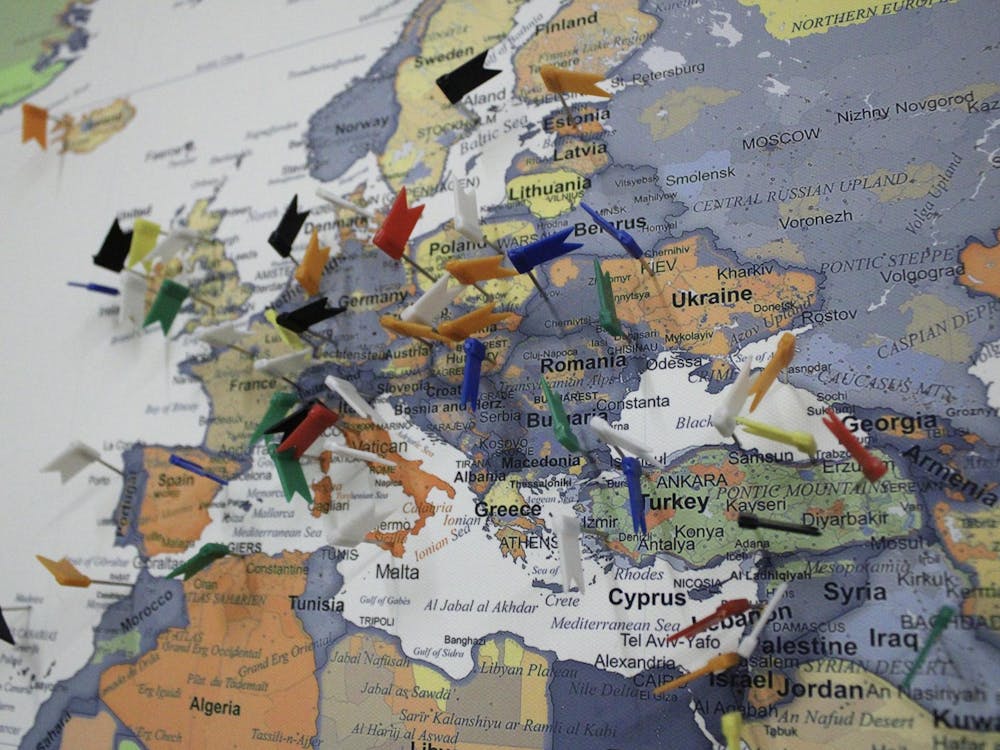IN BUILDING a memorial for the World Trade Center, we must remember that the events of September 11, 2001 still remain close in the hearts of many people. On April 19, Alice Greenwald, the director of the World Trade Center Memorial Museum, visited Grounds to give a presentation on the memorial and the museum. Greenwald explained that the memorial as well as the museum will be on the same site, Ground Zero. This combination is meant to separate the sight into two separate spaces with two very different purposes, however, the current site plan has intrinsic flaws in its efforts to keep history and commemoration entities.
The outside space will be used as a memorial for meditation and contemplation, with an 8 acre site containing 300 oak trees and two large waterfall-like reflecting pools that each fill a footprint of one of the towers. The museum -- to be build underground -- will serve as both a historical space to educate coming generations as well as a space of continued commemoration for those who bore witness to what is the single most documented event in human history.
The fact that the memorial and the museum are on the same site creates clear problems. There will be two very separate groups visiting Ground Zero. In the beginning the majority of people will go for the purposes of mourning at the memorial and remembering the history of 9-11 in the museum. But, as time goes by, there will be those visiting the site only with the intention to mourn while there will be tourists from around the country and the world who wish to visit the museum. The memorial above ground will be a quiet, somber place to remember the lives of family members who lost their lives, but through this area of mourning will undoubtedly pass museum visitors who will fail to respect the sanctity of the memorial space. The fact is that having both a museum and a memorial on the same site, completely inseparable from one another, will create a situation where casual museum patrons will disturb those visiting the memorial.
The most glaring flaw in the current design is that the unidentified remains of victims will preside below ground in a private area attached to the museum accessible only by family members of the victims. Because the memorial is above ground, and below is meant to be a historic museum, it is shameful that family members of victims will have to relive the entire day's tragic events while moving down to the bottom-most part of the museum exhibit to mourn the loss of their loved ones. In addition, there will be immense security precautions taken -- as security takes up almost half of the square footage on the main level. To make a mourner undergo long, extensive security checks -- a brutal reminder of what the world is like after the events of 9-11 -- before gaining access to the remains is at the very least a cruel measure.
Another architectural flaw is the escalator that will bring visitors down to the main area of the museum, where will the remains of the unidentified will be housed. There will be no staircase allowing museum patrons to enter the emotional exhibit at their own pace, and the forced movement of the escalator may create a situation where people feel like they are brought to grief at either too slow or too fast a pace. While Greenwald says that it will not feel like being on an escalator in a department store, visitors will still be unable to slow down and enter the area at their own pace, possibly making many people uncomfortable.
While there are many positive aspects of the current project, these concerns must be addressed because they will have a large impact on the way millions of visitors will interact and engage with the space. It is very difficult to incorporate a museum and a memorial into the site of a national tragedy, but the winning site design chooses to do so.Now, the project coordinators must be careful in the way they design the project because with such an emotional subject, many people will be offended and hurt by the plans as they currently exist.
Greg Crapanzano's column appears Wednesday's in The Cavalier Daily. He can be reached at gcrapanzano@cavalierdaily.com.






